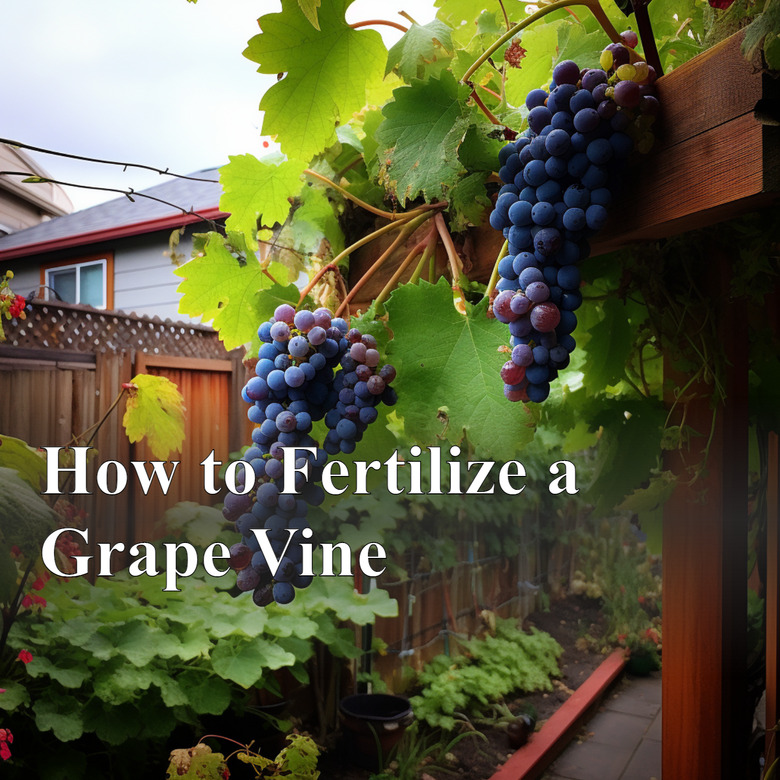How To Fertilize A Grape Vine
Things Needed
- Organic fertilizer
- Organic mulch
Warning
Grape vines develop a great web of roots, much of which is within the top foot or two of the soil. Older grape vines may have massive root systems that are 6 feet deep. Plant grapes in areas where there are no pipes or drainage tiles underground.
Grapes have been bred to grow in almost every climate and every type of soil. Table grapes, wine grapes and raisin grapes have similar growing needs. Once your grape vines are established, you can expect them to produce crops for up to 40 years. Knowing when and how to fertilize your grape vines will keep them healthy and productive.
Grape flowers and fruits grow only on new growth from cane buds that formed the previous year and were dormant over the winter. Grape vines need well-developed root systems to produce good fruit year after year, so soil structure is an important factor.
How Much and What Kind of Fertilizer to Use
Step 1
First year plantings of grape vines do not require fertilizer. They will expend energy on developing roots during their first season, so if you feel obligated to provide fertilizer, use something with low nitrogen (N), high phosphorus (P) and low potash (K). Bone meal is a good organic source of phosphorus; for new grape vines, mix about one teaspoon of bone meal into the planting hole. Nitrogen fertilizer will encourage excessive leaf growth instead of the root system the grape needs to make it through the winter. Phosphorus will encourage root development.
- Grapes have been bred to grow in almost every climate and every type of soil.
- Grape vines need well-developed root systems to produce good fruit year after year, so soil structure is an important factor.
The optimum soil pH (acidity level) is between 5.0 and 6.0. Do soil testing before adding any corrective lime. Grapes will grow quite nicely in soil that falls outside the realm of the perfect pH.
Step 2
Keep competitive weed growth at least 2 feet away from the vines on each side. Manage weeds with organic mulch and by pulling and hoeing.
Step 3
The second year after planting grape vines, you might want to fertilize lightly with a layer of compost or use a balanced 5-5-5 organic fertilizer one time in the early spring just as the vines break dormancy. Keep compost or fertilizer at least 6 inches away from the trunk of the vine.
- The optimum soil pH (acidity level) is between 5.0 and 6.0.
- The second year after planting grape vines, you might want to fertilize lightly with a layer of compost or use a balanced 5-5-5 organic fertilizer one time in the early spring just as the vines break dormancy.
Step 4
The third year and thereafter, a light layer of compost in the early spring is all your grapes should need.
Grapes have a symbiotic relationship with mycorrhizae, which are naturally occurring fungi that live in the grape roots and aid in the breakdown and absorption of nutrients from organic material. This is one reason why the layer of compost and organic mulch is so efficient in providing the needs of grape vines. Avoid using garden chemicals, which will upset the balance of mycorrhizae.
